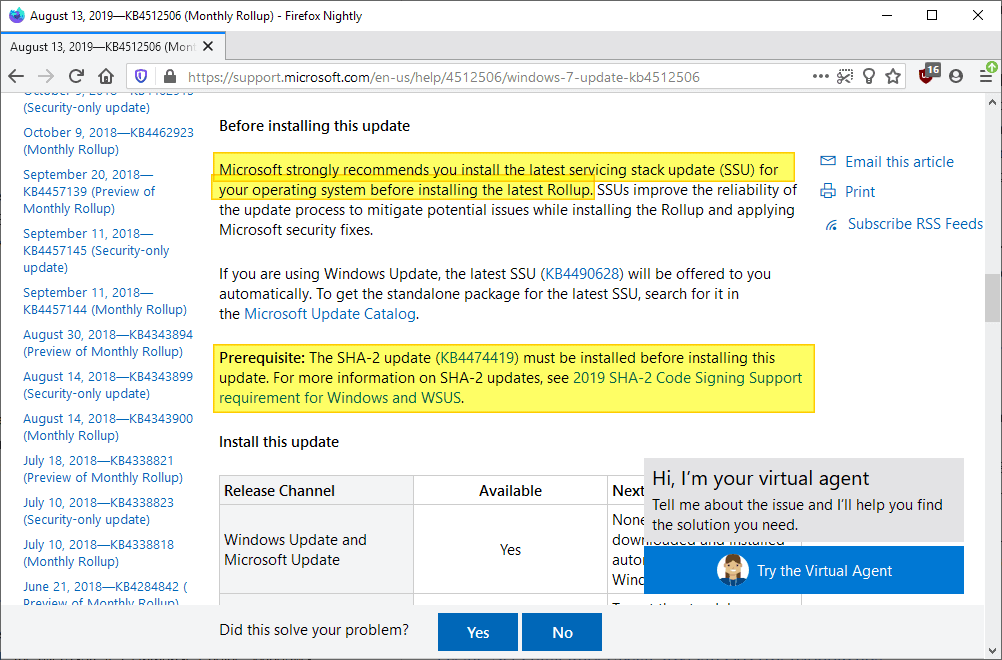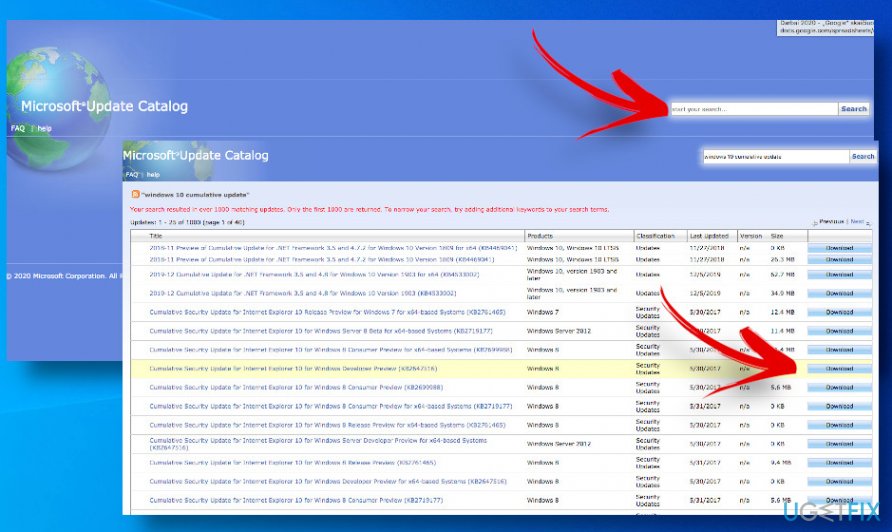
- #REPAIR WINDOWS UPDATE CATALOG INSTALL#
- #REPAIR WINDOWS UPDATE CATALOG UPDATE#
- #REPAIR WINDOWS UPDATE CATALOG PATCH#
- #REPAIR WINDOWS UPDATE CATALOG WINDOWS 7#
- #REPAIR WINDOWS UPDATE CATALOG DOWNLOAD#
#REPAIR WINDOWS UPDATE CATALOG UPDATE#
When I finished installing all 100 or so updates, I tried running Windows Update again. Some of them popped up a message like "this update is not required for your computer", so I just deleted those without installing. So I grinded my way through the updates, installing two or three at a time then rebooting when I saw the window I described above for more than 20 seconds with no progress.
#REPAIR WINDOWS UPDATE CATALOG INSTALL#
But I observed that after a reboot, the update which got stuck would then install successfully. In order to kill it I had to close three tasks in Task Manager or restart. Some of the updates would do similar to Windows Update itself - when I ran the update, I got a window which had a title of "Windows Update Standalone Installer", with a "doing stuff" type progress bar (rather than one which progresses just once from left to right) below the phrase "Searching for updates on this computer", with a cancel button in the bottom right.Ĭlicking cancel did nothing. I then installed each of these updates manually.
#REPAIR WINDOWS UPDATE CATALOG DOWNLOAD#
I used this to manually download 106 security updates. I decided to install updates manually, and the briefest of googling found the Windows Update Downloader. One processor core would max out and one of the svchost tasks in the taskbar devoured a gigabyte of memory. I had the same experience - Windows would check for updates forever. If you like you can change Windows Update settings back to automatic when you've finished applying updates. Run Windows Update and you should be presented with the expected slew of updates (in my case, 198) requiring installation.
#REPAIR WINDOWS UPDATE CATALOG PATCH#
This update rollup will bring the system current to patch Tuesday of April 2016.
#REPAIR WINDOWS UPDATE CATALOG WINDOWS 7#
This will make it Much faster to update Windows 7 after a clean install, no more Windows update issues and many reboots.

Microsoft has released a huge update rollup for Windows 7 SP1, this is similar to a service pack but they are not calling it that. If Service Pack 1 is not installed, install it before following this guide. This is what I do when I reinstall Windows 7 with SP1 or have issues with Windows update stuck on checking for updates.

This issue has come and gone over the years with different fixes along the way, so here is my updated guide to this issue as of this date January 5th, 2016. If this is still not helping to search for new updates, use WSUSOffline to get all the updates. To be able to install the update you first need to install the April 2015 servicing stack update for Windows 7 and Windows Server 2008 R2 update (again, stop WU service before trying to install the MSU).ĭownload (April 2015 servicing stack update): Try the downloaded update and see if it speeds up the installation of Updates.

This can be done from the command line, or from the Service Manager window. This speeds up the setup of MSU updates and the useless steps from Moab are not required (reboot causes that the WU service is stopped until it gets started via trigger when Internet is available).

This update contains some improvements to Windows Update Client in Microsoft released a Windows Update Client Update which is part of the July 2016 Update Rollup to fix the long hang at Windows Update scan.


 0 kommentar(er)
0 kommentar(er)
